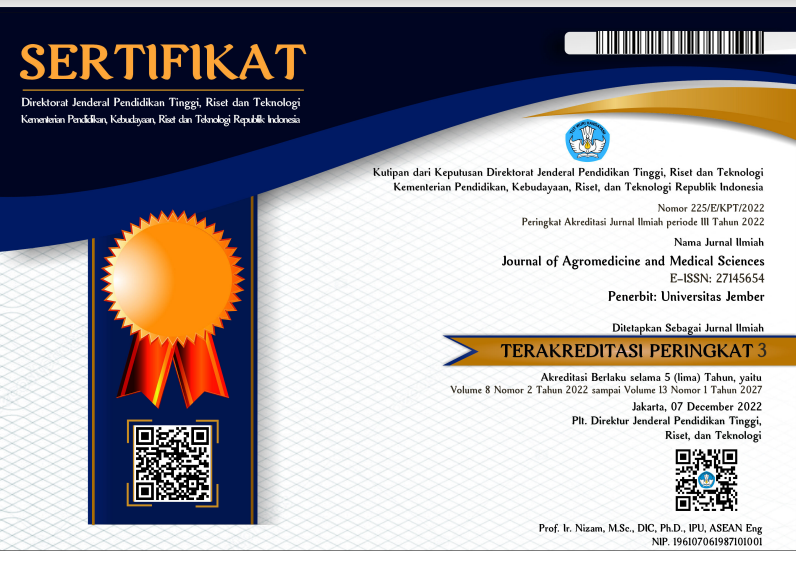Malondialdehyde Expression in HT29 Cells with Blastocystis sp. Exposure
DOI:
https://doi.org/10.19184/ams.v10i3.4749Keywords:
Blastocystis sp., HT29, malondialdehydeAbstract
Blastocystis sp. is one of the intestinal protozoa that is frequently found in stool specimens of colorectal cancer patients. The clinical aspects of this protozoan are still very controversial. The debate on Blastocystis sp. as a commensal, protecting, or aggravating colorectal cancer still continues. Increased expression of malondialdhyde, a marker of oxidative stress, is associated with the pathogenesis and progressivity of various diseases, including cancer. This study aims to determine the exposure of Blastocystis sp. on malondialdehyde expression in colorectal cancer cell line HT29. This research is an experimental study in vitro. HT29 cells were treated with various concentrations of Blastocystis sp. antigen (0.005 μg/ml, 0.01 μg/ml, 0.05 μg/ml, 0.1 μg/ml and 0.5 μg/ml) for 72 hours. Malondialdehyde expression was examined using spectrophotometric method. The results of statistical analysis using the Kruskall Wallis test showed that there were differences in malondialdehyde expression in HT29 cells after being exposed to Blastocystis sp. in various concentration (p=0.007). Post Hoc test showed that significant differences in malondialdehyde expression were found in the exposure groups of 0.1 and 0.5 μg/ml with the control group, 0.005 and 0.01 μg/ml with 0.1 μg/ml and groups of 0.005 and 0.01 μg/ml with 0.5 μg/ml. So it can be concluded that exposure to Blastocystis sp. with a certain intensity can suppress oxidative stress so that it can protect and inhibit the progressivity of cancer.





















